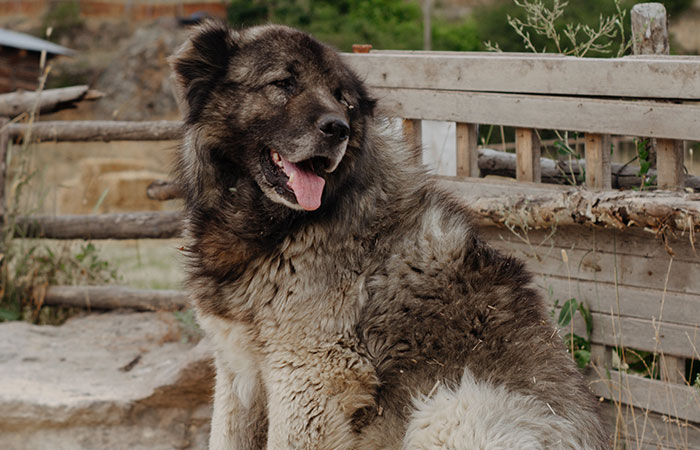
New Study Of 150 Dog Breeds Finds Size, Gender, And Nose Shape All Correlate With Dog Lifespan
Some dogs have it “ruffer” than others.
A new study suggests that breeds with flattened faces have a shorter lifespan than those with longer features. It also found the breed that was most likely to live “fur-ever” (in dog years).
The study, published in the journal Scientific Reports on Thursday (February 1), examined nearly 600,000 British dogs from more than 150 breeds and showed that large breeds and breeds with flattened faces had shorter average life spans than smaller dogs and those with elongated snouts.
And just like women tend to live longer than men around the world, researchers found that female dogs also lived slightly longer than males.
Nevertheless, there are exceptions to those broad trends, and the findings might not apply to dogs outside Britain, where breeding practices and gene pools may differ, the researchers noted, as per The New York Times.
A new study suggests that breeds with flattened faces have a shorter lifespan than smaller dogs and those with elongated snouts
Image credits: Hannah Lim
While more research will be needed to find out why some breeds have shorter life spans than others, some breeds are simply more genetically predisposed to serious health problems.
Experts have highlighted the fact that breed-related differences in behavior, lifestyle, diet, environment, or other factors could also play a role in shortening some dogs’ lives.
Kirsten McMillan, an author of the new study and the data manager at Dogs Trust, a dog welfare charity in Britain that led the research, said: “Now that we have identified these populations that are at risk of early death, we can start looking into why that is.”
She further revealed: “This provides an opportunity for us to improve the lives of our dogs.”
As a group, small breeds lived for 12.7 years on average, compared with 11.9 years for large breeds, the study suggests
Image credits: Karolina Grabowska
As per The Times, researchers used a database of 584,734 British dogs, which they assembled from breed registries, pet insurance companies, veterinary companies, and other sources.
These types of records, which can be prone to various biases, are not necessarily representative of Britain’s general canine population, the scientists acknowledged.
Audrey Ruple, a veterinary epidemiologist at Virginia Tech who was not involved in the new study, told The Times that the researchers’ use of so many different data sources was one of the study’s strengths. She admitted: “I think this is a fantastic approach.”
Most of the dogs were purebred, representing one of 155 breeds; the rest were combined into a single crossbred category.
Small, long-nosed breeds, such as miniature dachshunds, lived 13.3 years on average, roughly two and a half years longer than large, brachycephalic breeds
Image credits: Pavel Danilyuk
According to Britannica, a purebred dog is considered to be one whose genealogy is traceable for three generations within the same breed. Meanwhile, a crossbreed dog is one whose parents are of two different breeds or a mixture of several breeds, The Kennel Club explains.
The researchers subsequently found that purebred dogs, as a group, had average life spans of 12.7 years compared with 12.0 years for crossbred dogs.
That survival advantage for purebred dogs contradicts some prior research and could stem from the fact that all crossbred dogs, regardless of size or breed mix, were combined into a single category, scientists said.
Nevertheless, Dr. Ruple reportedly said that she was glad to see results that challenged the conventional wisdom that mixed-breed dogs are always healthier than their purebred counterparts.
Across all dogs, the median life span was 12.5 years, the researchers found, but the average life span varied “quite spectacularly” among breeds
Image credits: Blue Bird
She said: “I think it is a more complex question than that. There are pure breeds of dogs that are generally pretty healthy.”
Across all dogs, the median life span was 12.5 years, the researchers found, but the average life span varied “quite spectacularly” among breeds, Dr. McMillan said, as per The Times.
Lancashire heelers, a breed of petite herding dogs, were canine Methuselahs (the biblical name for the longest-living human being), living for 15.4 years on average.
In 2003, the intelligent, alert, and friendly breed was placed on the Endangered Breeds list of The Kennel Club, U.K., due to the small number of dogs composing the gene pool and the risk of several inherited diseases.
The much larger Caucasian shepherd dogs weren’t as lucky, with an average life span of just 5.4 years
Image credits: Berna Tosun
Meanwhile, the much larger Caucasian shepherd dogs weren’t as lucky, with an average life span of just 5.4 years.
According to the American Kennel Club, the Caucasian Shepherd dog is a serious guardian breed and should never be taken lightly.
The Caucasian is bold, fearless, self-confident, and fierce when a threat is present, but he is soft, devoted, kind, and endearing to his family, including other family pets.
As a group, small breeds lived for 12.7 years on average, compared with 11.9 years for large breeds, the study suggested.
Flat-faced breeds, known as brachycephalic, lived for 11.2 years on average
Image credits: Josue Michel
Flat-faced breeds, which are also called brachycephalic, lived for 11.2 years on average, while medium- and long-faced breeds had average life spans of 12.8 and 12.1 years, The Times reported.
The Humane Society Veterinary Medical Association noted that there are 24 dog breeds with brachycephalic conformation, and some of them include the popular French Bulldogs, as well as Bulldogs, Boxers, Cavalier King Charles Spaniels, Shih Tzus, Boston Terriers, Mastiffs, and Pugs.
Although brachycephalic breeds are at increased risk for numerous morbidities, their inability to breathe normally is considered the greatest impediment to their welfare, the society wrote.
It further stated that 50% of Pugs and French Bulldogs and 45% of Bulldogs have clinically significant signs of Brachycephalic obstructive airway syndrome (BOAS).
The lead author of the study emphasized the importance of being aware that some breeds will need more trips to the vet
Image credits: adrian vieriu
Some of the clinical signs of BOAS can include dyspnea (difficulty breathing), stertor (noisy breathing), exercise intolerance, regurgitation/vomiting, and overheating.
As a group, small, long-nosed breeds, such as miniature dachshunds and whippets, lived 13.3 years on average, roughly two and a half years longer than large, brachycephalic breeds, which together had an average life expectancy of 10.7 years.
Lead author Dr. McMillan emphasized the importance of being aware that some breeds will need more trips to the vet.
But on a more “paws-itive” note, she also highlighted the bigger consideration, which is the love and affection potential owners will invest in their furry friends.
She told Agence France-Presse: “These animals are members of our family. We want to ensure that we’re doing everything we can to provide them with a long, happy, and healthy life.”
Many readers weren’t surprised by some of the new study’s facts
Explore more of these tags
For those pooh-poohing the science, it's important to be able to be able to put actual numbers and real statistics behind beliefs that appear to be "common sense". After all, the idea that disease is spread by bad smells was "common sense" at one time. Ideas and theories mean nothing until they are confirmed by solid science. Unless we have solid baseline figures, it is impossible to accurately track how these figures are changing year on year - whether we are doing better or worse.
My big baby is 15 end of April. She going blind and deaf but still walks 7~10 km. It's important to keep them active and stimulated. She comes to work with me. I'm sure that helps a lot to keep her happy and stimulated.
Borzois should live pretty much for ever with those snoots 🤣 Seriously though you can expect your rescue greyhound to get to 12 to 14
For those pooh-poohing the science, it's important to be able to be able to put actual numbers and real statistics behind beliefs that appear to be "common sense". After all, the idea that disease is spread by bad smells was "common sense" at one time. Ideas and theories mean nothing until they are confirmed by solid science. Unless we have solid baseline figures, it is impossible to accurately track how these figures are changing year on year - whether we are doing better or worse.
My big baby is 15 end of April. She going blind and deaf but still walks 7~10 km. It's important to keep them active and stimulated. She comes to work with me. I'm sure that helps a lot to keep her happy and stimulated.
Borzois should live pretty much for ever with those snoots 🤣 Seriously though you can expect your rescue greyhound to get to 12 to 14

 Dark Mode
Dark Mode 

 No fees, cancel anytime
No fees, cancel anytime 































































61
18